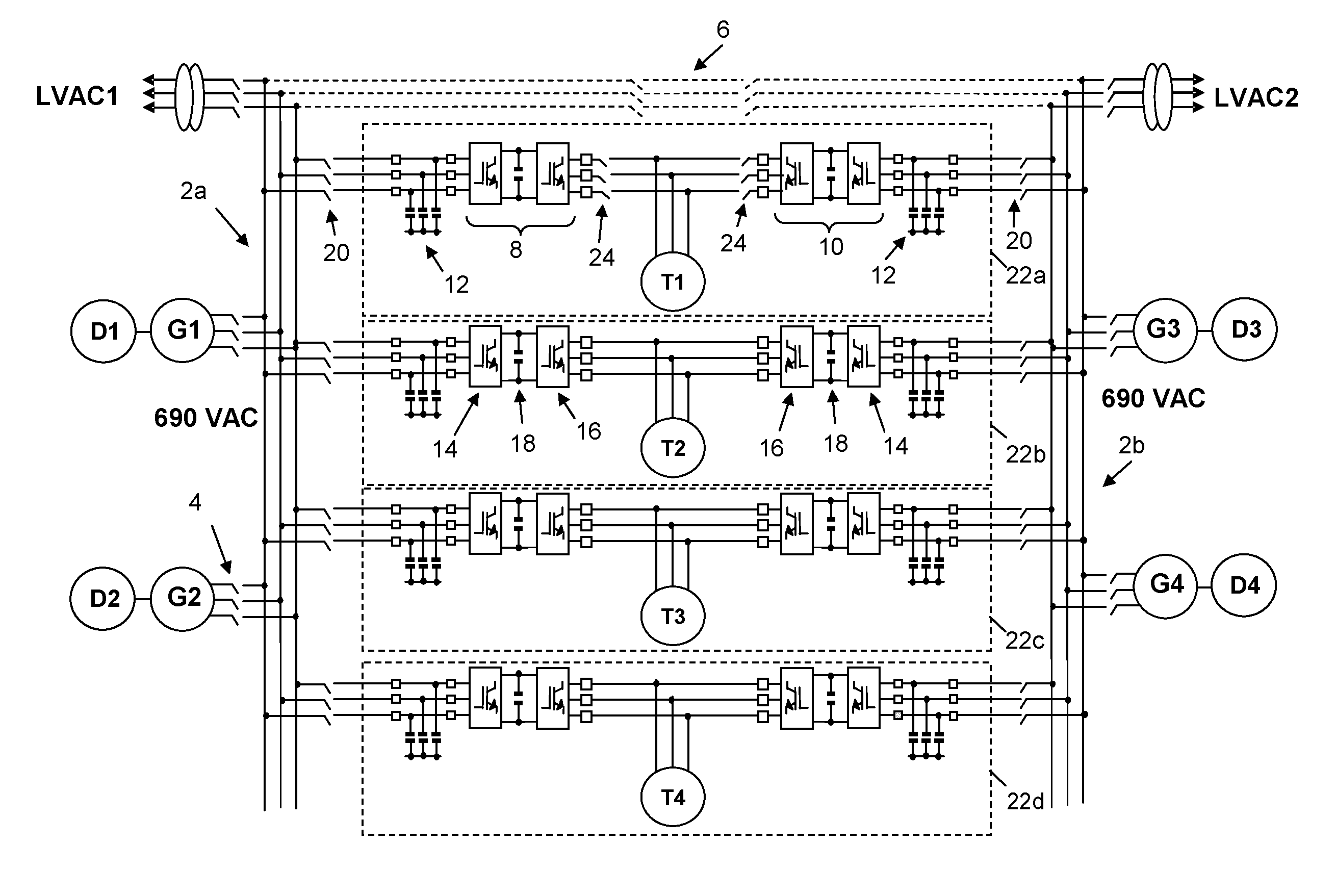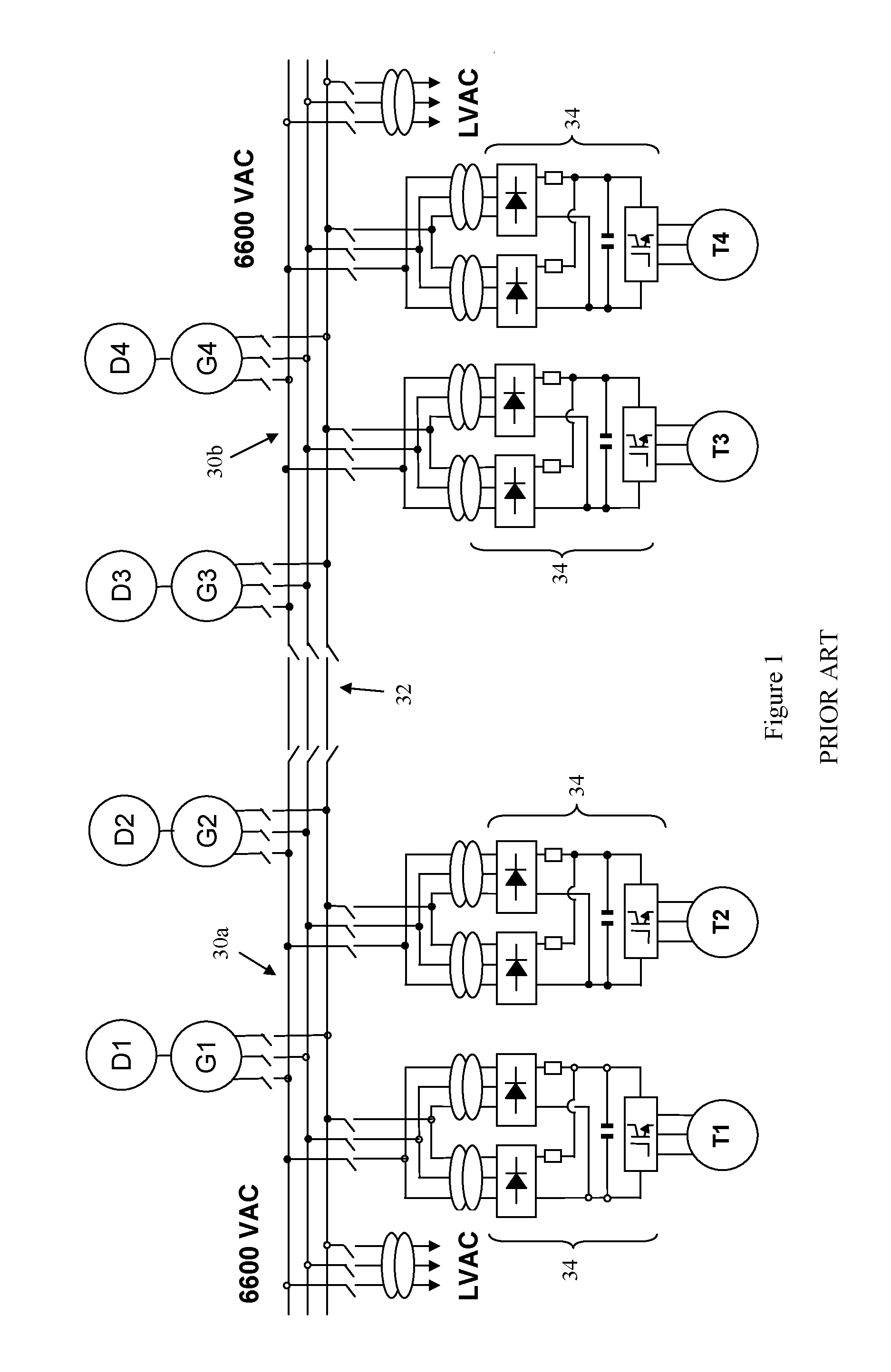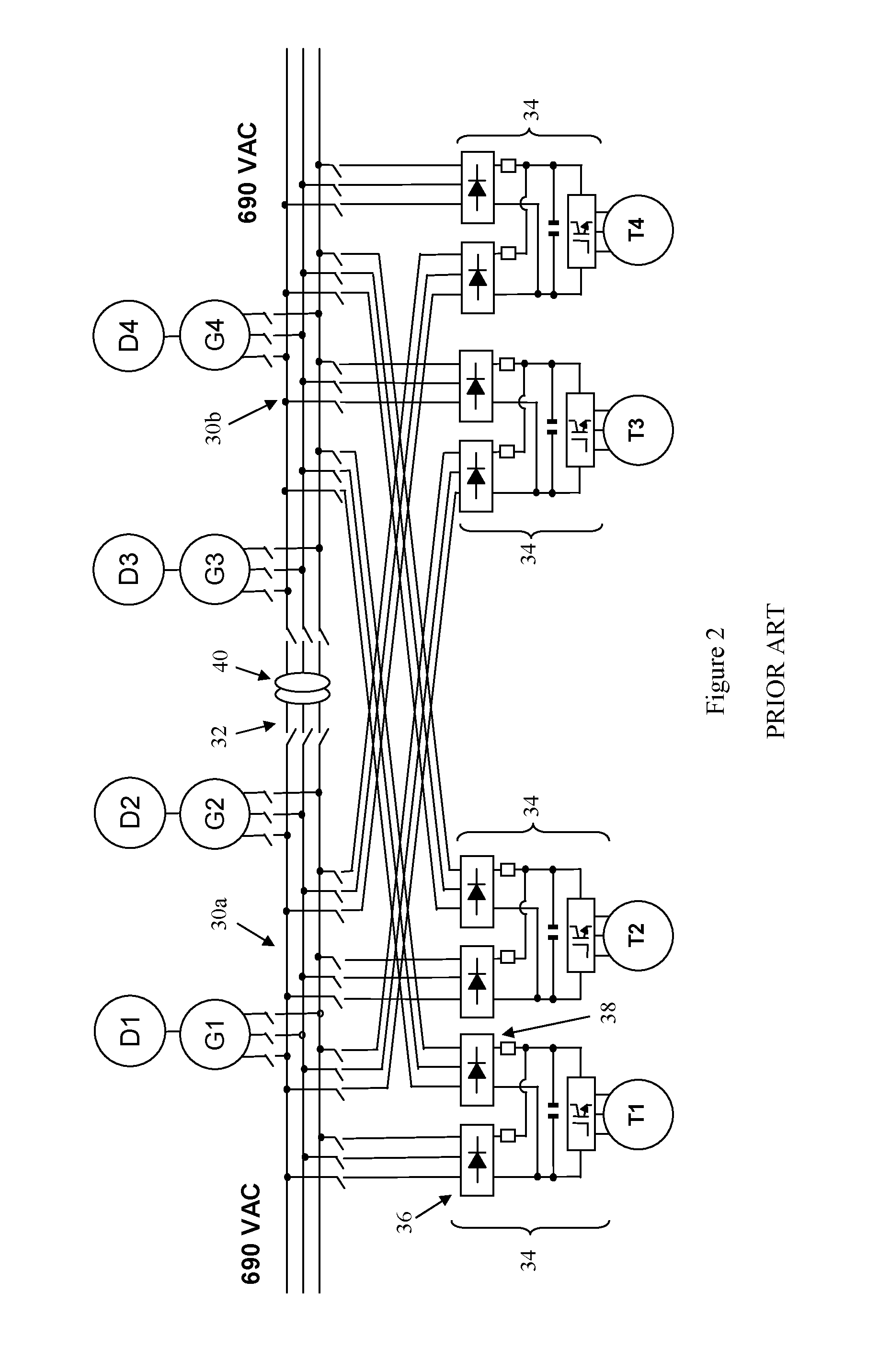Methods of operating dual fed systems
a dual-fed system and feed technology, applied in the direction of single-network parallel feeding arrangement, ac-dc network circuit arrangement, etc., can solve the problem that the diode front end of each power converter b>34/b> still does not allow control of the amount of power supplied by each ac busbar, so as to minimise total power usage, minimise exhaust emissions, and minimise total power usage
- Summary
- Abstract
- Description
- Claims
- Application Information
AI Technical Summary
Benefits of technology
Problems solved by technology
Method used
Image
Examples
example
(3)
[0070]The dual fed marine propulsion system shown in FIG. 3 allows the thrust allocation to achieve minimum power, i.e. all four thrusters T1-T4 supply equal thrust of 30.74 kN and request equal power of about 0.17 MW with a total power requirement of about 0.68 MW. The power allocation will minimise NOx emissions by sharing power between the first and second ac busbars 2a, 2b so that generators G1, G2 each output about 0.3 MW (in other words they operate at the highlighted minimum of the emissions curve) and the remaining two generators G3, G4 each output about 0.04 MW. Referring to FIG. 5 then diesel engines D1, D2 will each produce NOx emissions of about 0.162 kg / h and diesel engines D3, D4 will each produce NOx emissions of about 0.127 kg / h.
[0071]This gives an emissions total of about 0.578 kg / h for all four diesel engines and represents a significant reduction in NOx emissions of 21% compared to example (2) and 55% compared to example (1).
PUM
 Login to View More
Login to View More Abstract
Description
Claims
Application Information
 Login to View More
Login to View More - R&D
- Intellectual Property
- Life Sciences
- Materials
- Tech Scout
- Unparalleled Data Quality
- Higher Quality Content
- 60% Fewer Hallucinations
Browse by: Latest US Patents, China's latest patents, Technical Efficacy Thesaurus, Application Domain, Technology Topic, Popular Technical Reports.
© 2025 PatSnap. All rights reserved.Legal|Privacy policy|Modern Slavery Act Transparency Statement|Sitemap|About US| Contact US: help@patsnap.com



